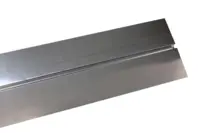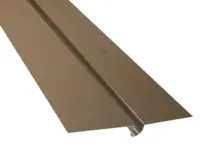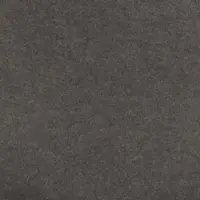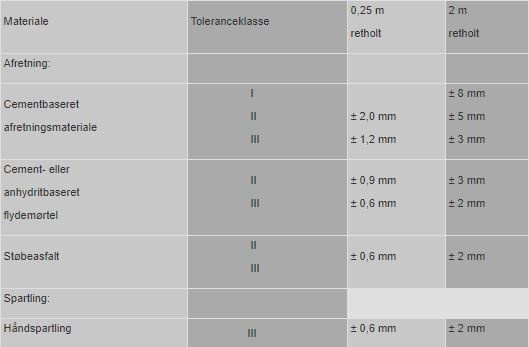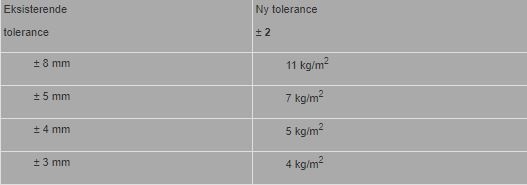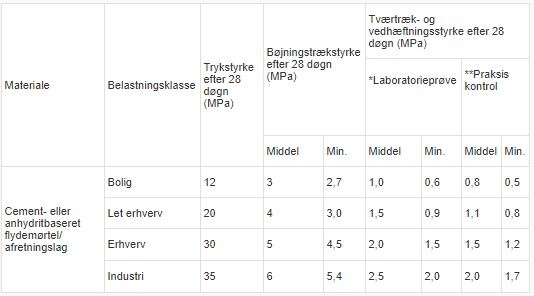- Forside
- Gode råd om gulv
- Konstruktioner
- Undergulve
- Støbte undergulve
- Akustikpaneler
- Afpassede tæpper
- Bambusgulve
- Bordplader & bordben
- Designgulve
- Fliser og klinker
- BeefEater gasgrill
- Gode råd om gulv
- Gulvtæpper
- Gulvvarme
- Græstæpper
- Korkgulve
- Køkken, bad & garderobe
- Laminatgulve
- Linoleumsgulve
- Maling, Væv & Spartel
- Måtter
- Møbler & Boliginteriør
- Nålefilt og messetæpper
- Plejeprodukter
- Restpartier & gode tilbud
- Sildebensparket & Stavparket
- Tæppefliser
- Terrassebrædder
- Tilbehør
- Trægulve
- Vareprøver
- Vinylgulv
- Værktøj
- Øvrige produkter
- Loft- og vægpaneler
- Flotte gulve
- Fyrretræsgulv
- Klikgulve
- Bestilte varer
-
-26%
-
Populær29,00 DKK
-
29,00 DKK pr m2
-
Populær21,00 DKK
-
-59%39,00 DKK pr m295,00 DKKDu sparer: 56,00 DKK pr m2
Støbte undergulve
Alle informationer på denne side er kopieret materiale fra Gulvfakta som er et fagteknisk opslagsmateriale, Kilde: Gulvfakta
Undergulve der udlægges på arbejdsstedet som en flydende masse kaldes for støbteundergulve, tyndpuds gulve eller afretningslag. Efter størkning fås en sammenhængende flade der kan benyttes til montering af den egentlige gulvbelægning.I særlige tilfælde kan den støbtegulvoverflade efter en overflade coatning benyttes som den færdige gulvflade. Denne type af gulve behandles under afsnittet om fugefrigulve.
2.1.2.1 Afretningslag
2.1.2.2 Spartling
2.1.2.3 Støbte gulvunderlag/afretningslag
2.1.2.4 Krav til udlægningssted og underlagsmaterialer
2.1.2.5 Mellemlag
Alle informationer på denne side er kopieret materiale fra Gulvfakta som er et fagteknisk opslagsmateriale, Kilde: Gulvfakta
Underlaget for det afretningslaget skal have styrke og planhed, som beskrevet i udbudsmaterialet.
Før udlægningen af afretningslaget skal den bærende konstruktions overflade være ren og fri for mørtelklatter, cementslam og spild af olie, maling og tilsvarende. Underlaget skal også være fri for huller, revner og sprækker, idet disse kan medføre gennemsivning af primer og flydemørtel.
2.1.2.1 Afretningslag
Den bærende konstruktion leveres ofte med forholdsvis store ujævnheder, fx leveres støbte gulve ofte med en tolerance på ± 8 mm på et 2 meter retholt (klasse A i CtO´s publikation, Gulvkonstruktioner af beton).
På dette underlag skal gulventreprenøren i de fleste tilfælde aflevere et færdigt gulv med en tolerance på ± 2 mm på et 2 meter retholt.
Der må derfor foretages en udligning mellem de to tolerancer ved afretning af dækket, før lægning af gulvbelægning er mulig.
Afretning/opretning, kan fx ske med flydemørtel, puds, sand eller granulerede materialer.
Forbruget af afretningsmateriale kan bestemmes ud fra:
• Den forventede tolerance for planheden af den dækkonstruktion, som gulvet skal lægges på, fx ± 8 mm
• Den ønskede tolerance for planheden af færdig gulvoverflade, fx ± 2 mm
• Behovet for udligning af koteforskelle, fx ved elevatorer, trappereposer, døre o.l.
• Ønske om vandrethed/acceptabel pilhøjde (må færdigt gulv følge dækelementets overside helt eller delvis, eller skal der afrettes til vandret overflade?).
Tabel 1. Opnåelige tolerancer ved forskellige former for afretning/spartling
Ved håndspartling over større arealer skal det eksisterende underlag have en tolerance på højst ± 3 mm på et 2 m retholt.
Tabel 2. Vejledende materialeforbrug for udligning af tolerancer i mm/2 m med afretnings- eller spartelmasse.
Ved opretning i tykke lag og på store arealer er det normalt både af tekniske og økonomiske årsager mest fordelagtigt at anvende flydemørtel eller tilsvarende.
For at udligne tolerancer skal der mindst regnes med et materialeforbrug, som angivet i tabel 2.
For afretning med cementbaseret flydemørtel skal der dog regnes med et minimumsforbrug på 16 kg/m2.
Anhydritbaseret flydemørtel kræver en lagtykkelse på mindst 25 mm svarende til 45 kg/m2.
2.1.2.2 Spartling
Formålet med spartling er:
• At udjævne undergulvet til den planhed, der kræves for gulvbelægningen, som skal udlægges ovenpå
• At sikre et godt undergulv for limning
Spartelmasse vælges under hensyntagen til undergulvet og dets beskaffenhed.
Der findes spartelmasser til flere forskellige formål, fx til finspartling eller til opretning i tykkere lag.
Spartelmasser kan være tilsat fibre, der skal modvirke svindrevner under hærdning samtidig med, at de i nogen grad øger bøjetrækstyrken.
Spartling foretages normalt som håndspartling, men der findes dog spartelmasser, som er velegnede til pumpning på samme måde som cement- og gipsbaserede flydemørtler.
På et undergulv som i forvejen opfylder tolerancekravene for planhed, kan der regnes med, at der skal benyttes ca. 1 mm på sugende underlag og 2 mm på ikke-sugende underlag.
Eksempelvis kan der regnes med, at forbruget af spartelmasse for afretning af bræddegulve til ± 2 mm på et 2 meter retholt kan forventes at udgøre:
• Afretning af bræddegulv med fiberspartelmasse - ca. 6 kg/m2. Bræddesamlinger må forventes synlige pga. årstidsvariationer grundet fugtindholdet i gulvbrædderne
• Spartling af bræddegulv for udlægning af træfiberplader - ca. 3 kg/m2

Figur 7. På stabile bræddegulve kan der anvendes fiberspartelmasse eller spartelmasse på netarmering uden efterfølgende afdækning med træfiberplader.
Læs nærmere herom i afsnittet om Renovering.
For insitustøbt beton, slidlag, støbeasfalt, anhydrit mv. kan forbruget af spartelmasse bestemmes ud fra forskellen i planhed mellem undergulvet og den ønskede planhed af den spartlede overflade.
Partiel opretning af lunker i undergulv er forsvarlig at gennemføre ved håndspartling.
Vægtfylden for spartelmasser ligger typisk i intervallet fra 1,4 - 1,7 kg/mm/m2. Der henvises til databladene for de konkrete produkter, der ønskes benyttet.
Primning
Før spartling skal undergulvet primes. Primning foretages for at forbedre vedhæftningen til undergulvet, binde støvrester og sikre en ensartet sugeevne af undergulvet.
Styrke
Spartelmassen skal normalt have samme styrke som den underliggende konstruktion.
Definitioner
Tabel 3. Definitioner af spartellag
2.1.2.3 Støbte gulvunderlag/afretningslag
Støbte underlag kan udføres som:
• Beton
• Cementbaseret afretning
• Cementbaseret flydemørtel
• Anhydritbaseret flydemørtel
• Støbeasfalt
I det følgende gennemgås de enkelte typer og deres egenskaber nærmere.
Beton
Beton benyttes ofte som underlag for gulve. Beton fremstilles af sten, grus, cement og vand, og kræver omhyggelig proportionering og arbejdsudførelse, hvis der skal opnås høje styrker, tilstrækkelig planhed og en færdig overflade uden slamlag. Betongulve vil normalt ikke kunne udføres med en planhed, så de kan anvendes direkte som underlag for en gulvbelægning. For yderligere informationer om betondæk, se Gulvkonstruktioner af beton, Cementfabrikkernes Tekniske Oplysningskontor (CtO), 1994. CtO-publikationen angiver de belastnings- og styrkeklasser, som er gengivet i tabel 3.
Tabel 4. Belastnings- og styrkeklasser for betongulve i henhold til "Gulvkonstruktioner af Beton"
Cementbaseret afretningsmateriale
Cementbaserede afretningslag udføres af cementmørtel, dvs. en blanding af cement, sand og vand. De udlægges normalt i tykkelser over 40 mm. De bør udlægges så tidligt som mulig efter udstøbning af betondæk.
Cementbaserede afretningslag kan også anvendes som færdig gulvoverflade (slidlag).
Styrker
Færdigblandede, cementbaserede afretningslag leveres med angivelse af vejledende styrke, se tabel 4 eller 5.
Cement- og anhydritbaseret flydemørtel
Flydemørtel er beregnet til udlægning på store arealer ved hjælp af specielle pumpemaskiner. Flydemørtler indeholder store mængder af plastificeringsmidler, og behøver derfor kun beskeden bearbejdning for at flyde ud til en jævn plan flade. Inden spartling og gulvlægning skal flydemørtlen afslibes for at fjerne slamlag og "overfladehud" i overfladen. Afslibningen foretages nemmest kort efter udlægningen.
Flydemørtler opfører sig som vand i forhold til utætheder, revner m.v.
Tabel 5. Vejledende styrkekrav i MPa (28 døgns styrke) for afretningslag med vedhæftning til underlaget.
Tabel 6. Vejledende styrkekrav i MPa (28 døgns styrke) for afretningslag uden vedhæftning til underlaget, fx på glidelag af plastfolie eller lign. Styrker gælder aftræk med Ø 50 mm træklegeme. Ved afretningslag uden vedhæftning til underlaget friskæres med Ø 50 mm bor i 5 mm dybde for etablering af et veldefineret trækareal.
* Laboratorieprøve: Værdi opnået ved afprøvning i laboratorium.
** Praksis kontrol: Værdi, der skal kunne opnås, hvis der skal foretages kontrol på byggepladsen. Du kan læse om, hvorledes afretningsmaterialers trækstyrke kan bestemmes på byggepladsen i Gulvbranchens publikation "Trækstyrke vejledning"
*** Anhydritbaseret flydemørtel på membran må ikke udstøbes i en lagtykkelse under 30 mm. Cementbaseret flydemørtel på membran må ikke udstøbes i en lagtykkelse under 35 mm.
**** Styrkeegenskaberne for støbeasfalt er afhængig af materialets sammensætning. Leverandøren bør derfor altid tages med på råd i det konkrete tilfælde.
Lægningskonditioner
Inden udlægning af flydemørtel skal bygningen være lukket, og overflade- og rumtemperatur skal være over 10°C. Der må ikke være træk i rummet under udlægning og hærdning.
Planhed
Normalt må det påregnes, at der skal spartles inden gulvlægning, da det kun sjældent er muligt at udlægge flydemørtler, så limning af gulvbelægning kan foretages direkte på overfladen.
Da flydemørtel er selvnivellerende, er opbygning med fald på gulvoverfladen ikke mulig, det er dog muligt i nogen udstrækning at følge overfladens facon på et elementdæk med pilhøjde.
Styrke
Der kan opnås styrker af flydemørtler svarende til styrkeklasserne for beton.
Flydemørtlernes styrkeklasser bestemmes ved laboratorieforsøg, idet det er vanskeligt at bestemme styrken på den udlagte mørtel.
Tykkelser ved opretning
Der kræves en vis tykkelse af flydemørtler for at opnå den selvnivellerende virkning.
Cementbaserede flydemørtler bør normalt udlægges i en gennemsnitstykkelse på mindst 10 mm og vil normalt ikke kunne udlægges i tykkelser under 6 mm.
Anhydritbaserede flydemørtler bør normalt udlægges i en gennemsnitstykkelse på mindst 25 mm og vil normalt ikke kunne udlægges i tykkelser under 15 mm.
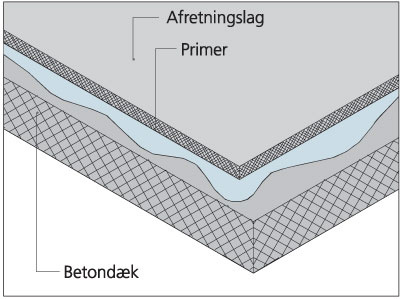
Figur 4. Afretningslag med vedhæftning til underlaget. Cement- eller anhydritbaseret
Anhydritbaseret flydemørtel udlagt løst på membran skal mindst have en tykkelse på 30 mm. Cementbaseret flydemørtel på membran kræver en tykkelse på mindst 35 mm.
Cementbaseret flydemørtel armeres med Ø5 mm rundjern pr. 150 mm i begge retninger eller tilsvarende armeringsnet.
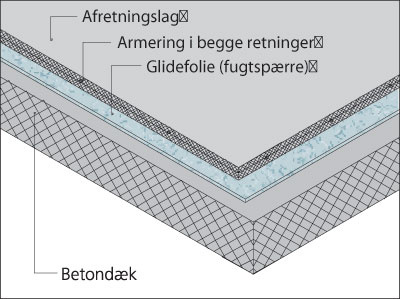
Figur 5. Afretningslag uden vedhæftning til underlaget. På betondæk med høj restbyggefugt eller betondæk med risiko for indtrængende eller opstigende fugt, fx terrændæk og kældergulve, benyttes PE-folie eller lign. som kombineret fugtspærre og glidelag mellem betondæk og afretningslag.
Flydemørtel udlagt på isoleringsmateriale (elastisk mellemlag) skal have en tykkelse på 40 - 45 mm. Cementbaseret flydemørtel armeres med Ø5 mm rundjern pr. 150 mm i begge retninger eller tilsvarende armeringsnet.
Fugt
Nogle flydemørtler kræver, at fugtindholdet i underlaget er under 90% RF, afsnittet om fugt for mere information.
Flydemørtel kræver tid til udtørring. Som en grov tommelfingerregel kan der regnes med ca. 1 døgn pr mm tykkelse ved lagtykkelser op til 20 mm.
Ved større tykkelser stiger udtørringstiden betragteligt, dvs. den bliver højere end svarende til 1 døgn pr. mm.
Anhydrit- og gipsbaserede flydemørtler er meget følsomme over for fugtpåvirkning.
Støbeasfalt
Støbeasfalt består af asfaltbitumen tilsat mineralske fyldstoffer som grus og kalk. Materialet gøres bearbejdeligt ved opvarmning.
Gulvene kan betrædes umiddelbart efter udlægning, og gulvbelægning kan pålimes, så snart støbeasfalten er afkølet.
Støbeasfaltgulve betragtes som ikke-sugende underlag, hvilket der må tages hensyn til ved valg af gulvlim.
Inden gulvlægning skal der derfor spartles i en lagtykkelse på mindst 2 mm med en spændingsfattig spartelmasse for at etablere en god klæbegrund.
I forbindelse med renoveringsopgaver skal revner i eksisterende støbeasfaltgulve limes sammen med en speciel epoxytype eller smeltes sammen ved hjælp af varme, for at undgå revner i spartelmassen.

Figur 6. Afretningslag af støbeasfalt. Asfalten udlægges på et damptryk- udligningslag af alu-folie.
Styrke
Styrken af asfaltgulvet bestemmes af forholdet mellem bindemiddel og tilslag.
Planhed
Støbeasfaltgulve kan udføres med en planhedstolerance på ± 2 mm på 2 m.
Fugt
Støbeasfalt er diffusionstæt og anvendes ofte som fugtspærre i forbindelse med fugtfølsomme gulvbelægninger.
2.1.2.4 Krav til udlægningssted og underlagsmaterialer
Inden spartling skal bygningen være lukket, og overfladeog rumtemperatur skal være over 10°C. Der må ikke være træk i rummet under udlægning og hærdning. Beton- eller pudsunderlag skal være hvidtørre før primning. Der må som hovedregel ikke spartles på spån-, krydsfinerog træfiberplader. Småreparationer kan dog udføres med polyesterspartelmasse eller tilsvarende. Eventuelle ujævnheder i pladesamlinger bør som hovedregel slibes væk.
Ved spartling på anhydritbaseret afretningslag er det meget vigtigt, at primeren samt det øverste lag af anhydritten er helt tørre, før der spartles.
Før der spartles på gamle støbeasfaltgulve, skal eventuelle revner i støbeasfalten lukkes.Dette gøres som regel ved sammenlimning med epoxy. Gulve, der har været vedligeholdt med polish el.lign. skal affedtes og/eller slibes, før der spartles.
2.1.2.5 Mellemlag
Mellemlag anvendes i svømmende gulve til at sikre, at gulvfladen kan bevæge sig frit i forhold til den bærende konstruktion.
Mellemlagene kan også tjene andre formål, fx benyttes asfalt til afretning og isoleringsmaterialer til at forbedre varme- og lydisolering.
Mellemlaget må vælges ud fra ønsket om at få et rimeligt stift gulv, der ikke skades af de belastninger, som gulvet er beregnet til, og som heller ikke medfører gener, fx rystelser ved gang eller generende hældninger af møbler og inventar på grund af gulvets nedbøjninger. Af hensyn til lyddæmpning og gangbehagelighed kan der omvendt være ønsker om at gøre mellemlaget så eftergiveligt som muligt. Ved valg må der i givet fald tages hensyn til begge forhold. Ofte kombineres mellemlagene. I svømmende undergulve af plademateriale skal underlaget for isoleringsmaterialer fx have en planhed næsten svarende til planhedskravet for den færdige gulvbelægning. Dette kan fx opnås ved at oprette med løst granulat, før isoleringsmaterialet udlægges.
Isoleringsmaterialer
Isoleringsmaterialer anvendes i gulvkonstruktioner til at forbedre lyd- og varmeisoleringen.
Ved strø- eller bjælkekonstruktioner kan der indlægges blød mineraluld mellem strøer og bjælker, hvor det bl.a. kan absorbere lyd.
I svømmende gulvkonstruktioner benyttes isoleringen til at hindre transmission af trinlyd fra gulvet til den bærende konstruktion samtidig med, at den overfører belastningen. Af hensyn til trinlyd skal isoleringslaget være så eftergiveligt som muligt, mens det, af hensyn til trægulvets styrke og stivhed, skal være så hårdt som muligt. Den nødvendige stivhed af isoleringslaget bestemmes ud fra den forventede belastning, isoleringslagets tykkelse og gulvmaterialet. Der kan groft regnes med, at mineraluld skal have en densitet på 75-130 kg/m3 og polystyren 30-40 kg/m3 afhængigt af lagtykkelse, pladetykkelse og belastning.
Mellem isoleringsplader og pladegulv udlægges ofte korkparkolag, ribbepap eller lignende for undgå generende lyd.
Andre mellemlag
Andre typer af mellemlag er omtalt i afsnittet om Trægulve, og Undergulve af pladematerialer.

